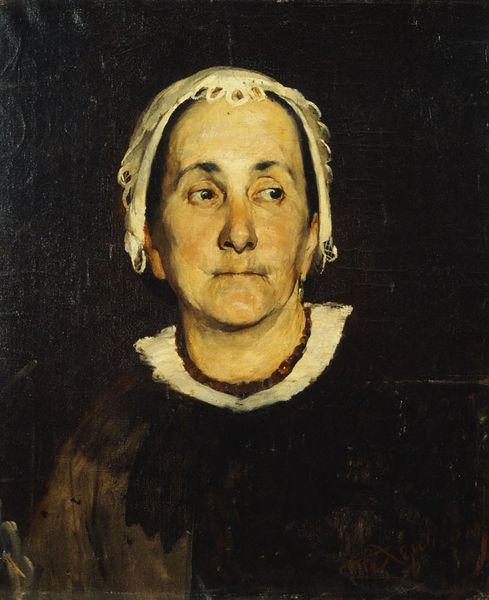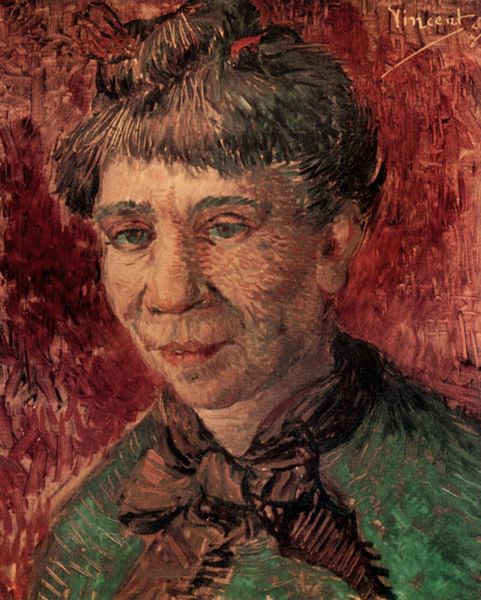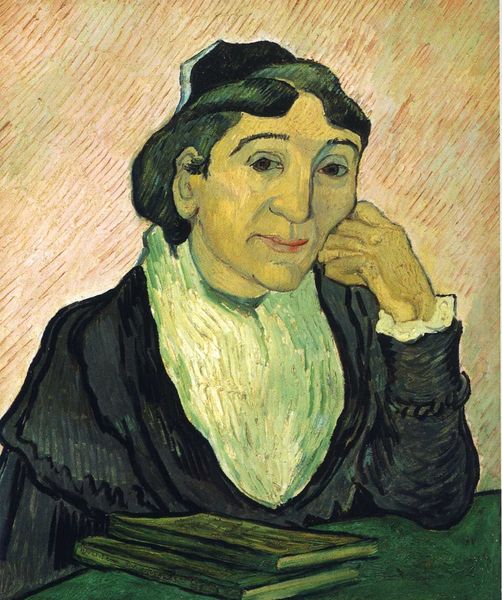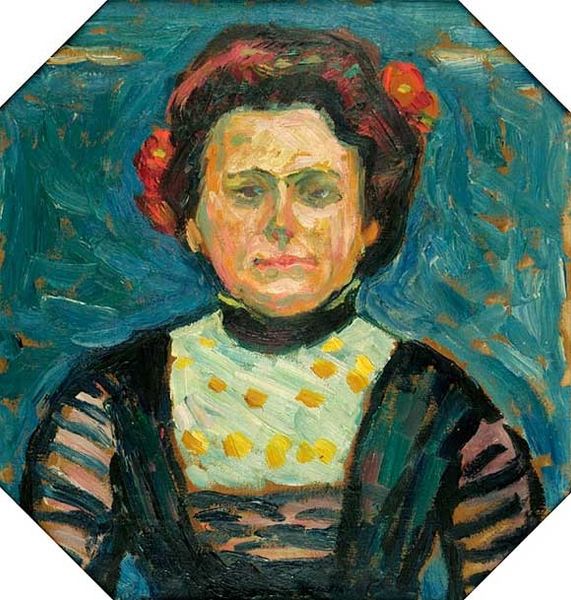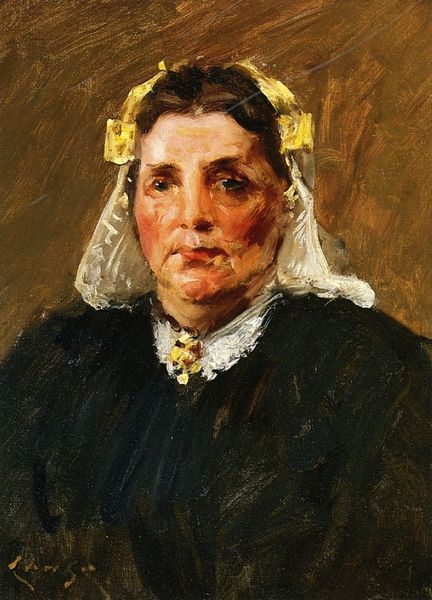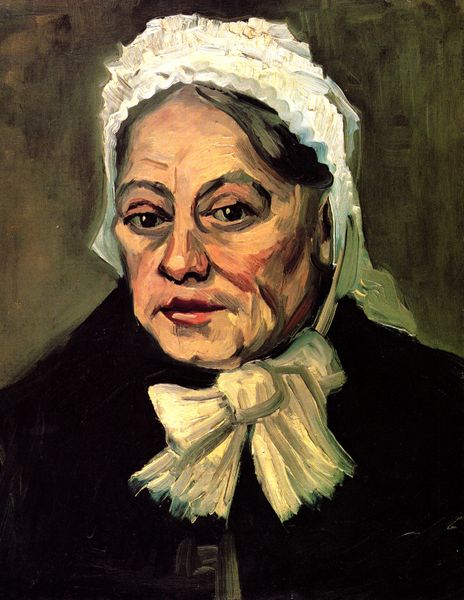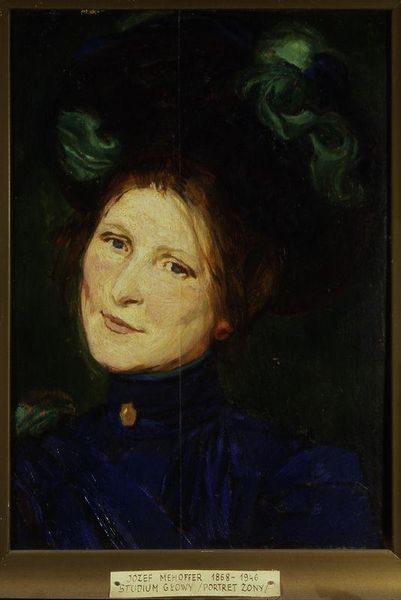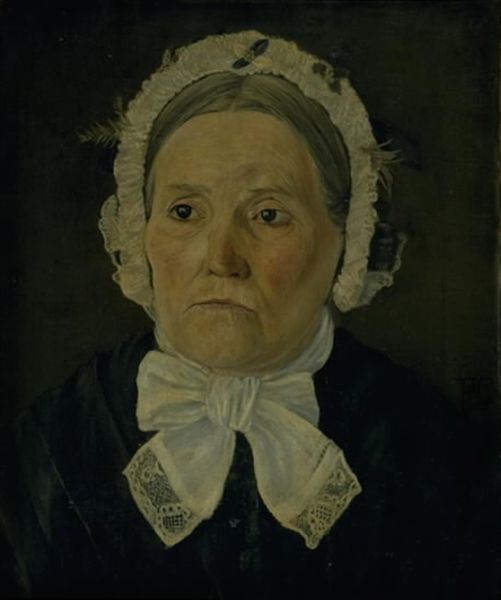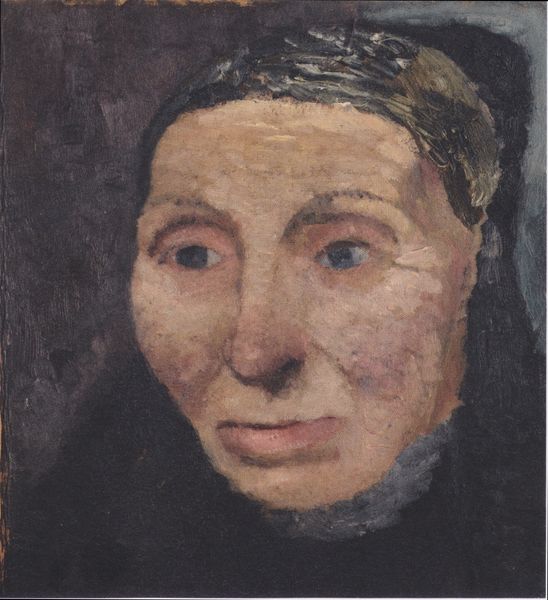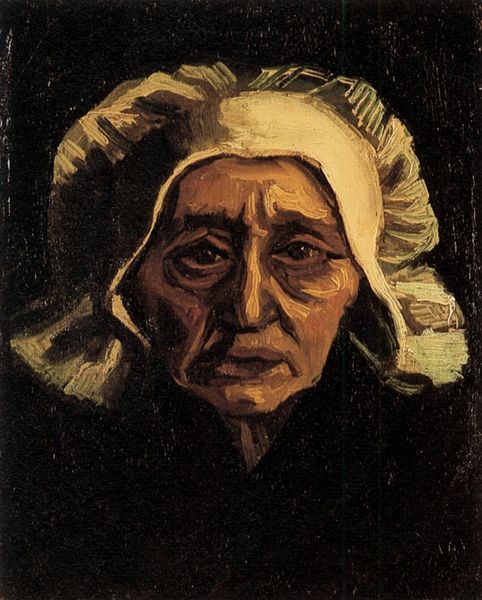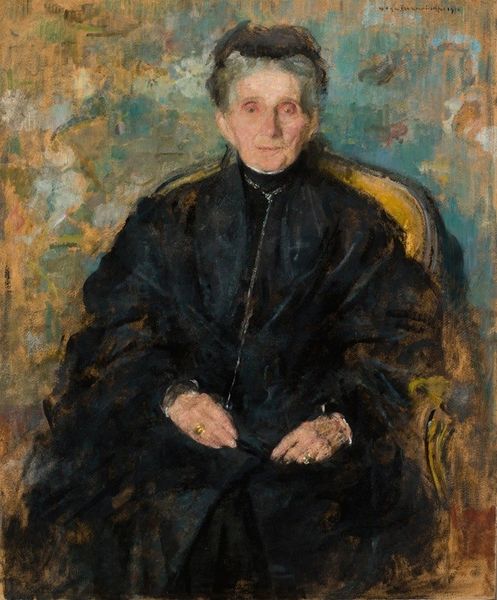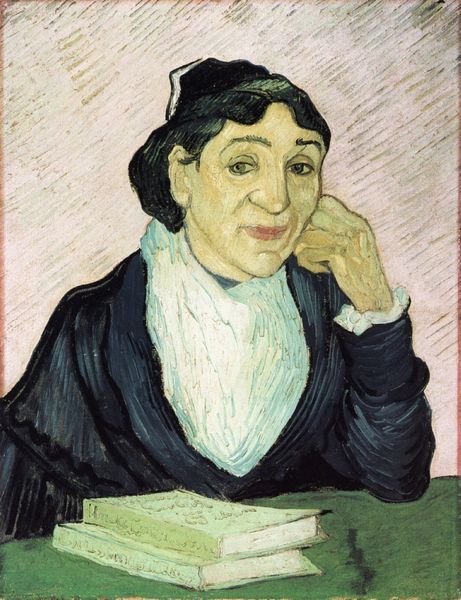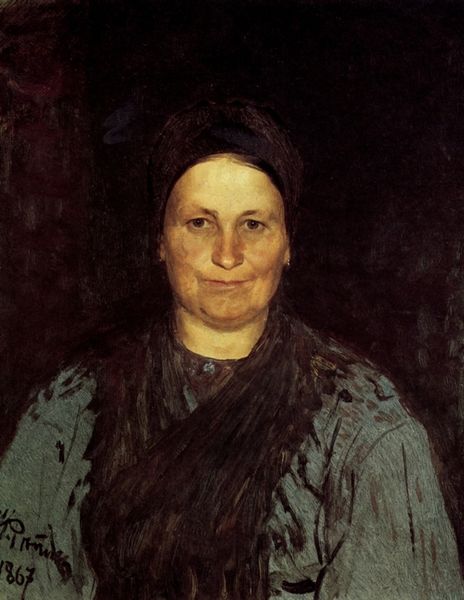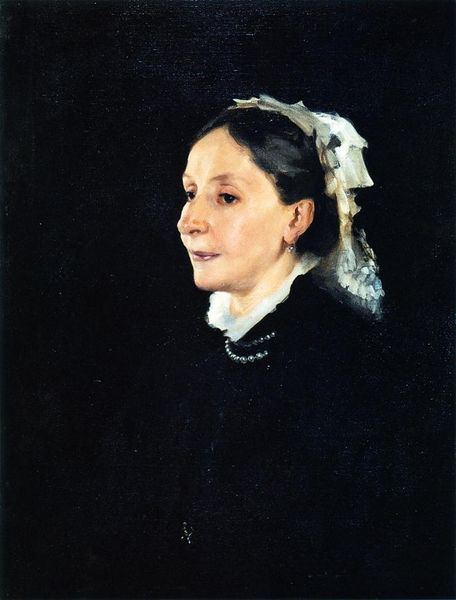
painting, oil-paint, impasto
#
portrait
#
painting
#
oil-paint
#
impasto
#
intimism
#
post-impressionism
#
realism
Dimensions: 40.5 x 32.5 cm
Copyright: Public domain
Editor: Here we have Van Gogh's "Portrait of the Artist's Mother" from 1888, rendered in oil paint. The vibrant green backdrop makes her face pop, but the overall feeling is still quite melancholic, almost ghostly, wouldn’t you say? What social or political statements do you see embedded in this piece? Curator: It's interesting that you pick up on a ghostly quality. This portrait, completed while Van Gogh was in the South of France, exists as both a deeply personal and publicly charged artwork. Remember, he painted this from a photograph after being away from his mother for quite some time, during which he was experimenting with Japanese printmaking. Can you see a similarity between the portrait and this art form? Editor: Well, now that you mention it, yes, there’s a certain flatness and boldness in the outlines, almost like a woodblock print. Curator: Precisely. And think about the socio-cultural implications. While he's painting his mother, he's also grappling with how he wants to be perceived by the Parisian art scene – should he focus on traditional subjects and art techniques? Or can a simple image of maternal love convey more? This tension reveals much about the politics of representation within the art world at that time. Do you find Van Gogh challenges this with his depiction? Editor: It definitely feels like a push and pull. I see the affection but also a detached quality because it's based on a photograph. Thanks to his distinct painting style and those sharp, unforgiving lines, it's like he's laying bare not only his mother's image, but also revealing their complex familial history. That personal revelation on canvas seems almost confrontational for the period. Curator: Exactly. This intersection of intimacy and public declaration really underscores the radical nature of much of his work. Understanding how art reflects and refracts personal and public dynamics gives us a much deeper appreciation of Van Gogh's process, don't you think? Editor: I totally agree! This deep dive into the painting definitely changed how I see Van Gogh's role as an artist.
Comments
No comments
Be the first to comment and join the conversation on the ultimate creative platform.
